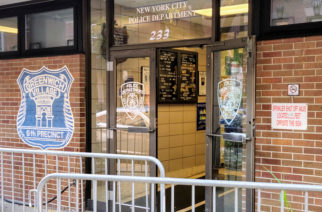
The Serviceman’s Readjustment Act of 1944 — better known as the G. I. Bill — was intended to provide World War II veterans with funds for housing and unemployment, but especially resources for education. At its core, the bill aimed to help veterans adjust to civilian life.
This objective, it was hoped, would be achieved by providing tuition, subsistence, books and supplies, equipment, and counseling assistance and services for veterans as they continued their college education. And for the most part, it succeeded in doing so. Within seven years, approximately eight million veterans received educational benefits.
By 1956, when it expired, the education-and-training portion of the bill had disbursed a total of $14.5 billion. Millions also took advantage of its home loan guaranty; and from 1944 to 1952, the Veterans’ Administration backed nearly 2.4 million home loans for World War II veterans.
But undoubtedly, the needs of our veterans go beyond just funding. Their issues are as much about advocacy and academic programming as they are about housing, hospitalization, mental health and every day survival. According to a report published by the National Center for Veterans Analysis and Statistics, Post 9-11 and Peacetime, there are more veterans living in poverty today than we had after World War II.
This weekend our nation observed Memorial Day where we remembered the countless men and women of courage — some of whom have paid the ultimate price and have laid down their lives for the preservation of the freedom and democracy of this country. I am blending my voice to the chorus urging our government to do more for our veterans and ensure that their needs are secondary to none.
Even those with an opposing view about wars, still unhesitatingly, stand in support of our troops knowing that they are men and women of valor who hold our country dear.
So the question becomes one that has been asked many times: How do you separate the troop from the mission? The war from the warrior? This is how we do it — first as we did on Monday — we celebrate and remember heroism, sacrifice and the devotion to duty of our fallen troops. Then we put these into action and make it more than remembering the past or celebrating the present. Let us continue even after Memorial Day to create the kind of linkages and connections that will allow us to breathe life into the G.I. Bill
For my part as a state legislator, I am doing so by sponsoring a series of bills aimed at improving the overall quality of life for the approximately 1, 851,470 veterans living in New York state. In these proposed laws, I call for a range of services including, but not limited to: the creation of a public education initiative designed to eliminate stigma and misinformation about mental illness and chemical dependence among military service members; a study regarding homeless persons who are veterans in the state of New York; a small business tax credit for the employment of unemployed veterans; and for the Division of Veterans’ Affairs to establish the Veterans’ Housing Program to ensure homeless veterans are being housed under federal Housing First principles.
Now that Memorial Day has passed, I encourage you all to find ways to take a proactive stance that says, “I will never forget the defenders of this nation.” Let’s thank Them! Honor Them! Praise them! Lift them up! Finally, I hope that you are inspired in your efforts with this maxim which says, “He that loseth wealth, loseth much. He that loseth friends loseth more. But he that loseth his spirit loseth all.”
My hope is that you do not lose the will, nor the spirit to fight for the rights of our veterans. But that you have the strength of eagles’ wings and the faith and courage to stand for duty, honor, and country forever. Let’s all be reminded that even “with all its sham, drudgery and broken dreams, it is still a beautiful world.”









